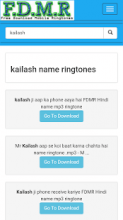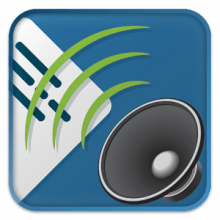Accurate Time 5.6.2
Accurate Times is the official software adopted by the Jordanian Ministry of Islamic Affairs to calculate the prayer times in Jordan. Also, it is the official software to calculate prayer times in UAE. The software runs under Windows, and it is written by Mohammad Odeh, the chairman of International Astronomical Center (IAC).
Features :
- Islamic prayer times (Fajer, Shuroq, Dhohur, Aser, Maghreb, and Isha).
- Sun times (Beginning and end of twilight, sunrise, sunset, and Sun transit).
- Moon times (Moon rise, Moon transit, and Moon set).
- Moon phases (Geocentric or Topocentric).
- Crescent visibility world map for both; new and old crescents.
Accurate Times shows the possibility of seeing the crescent all over the world by drawing colored curves on the world map. Where each color identifies a certain possibility of seeing the crescent. Some of the features which Accurate Times offers are:-
- Draws the curve for both; waxing (new) and waning (old) crescent.
- Shows the possibility of seeing the crescent according to three criteria; Odeh, Yallop and SAAO.
- Shows the impossible sightings. Where the sighting is considered impossible if the Moon sets before the Sun, or the Topocentric (not Geocentric) conjunction occurs after the sunset. For waning (old) crescent, the sighting is considered impossible if the Moon rises after the Sun, or the Topocentric (not Geocentric) conjunction occurs after the sunrise.
- Saves the Crescent Visibility World Map as image simply by clicking on a button.
The meaning of the colors for each criterion is as follows:
A- Odeh Criterion:-
Blue: Need Optical Aid : Crescent is visible by optical aid only.Magenta: Could be Seen by Naked
Eye: Crescent is visible by optical aid, and it could be seen by naked eye.
Green: Easily Visible by Naked Eye: Crescent is easily visible by naked eye
B- Yallop Criterion:-
Blue: Need Optical Aid: Will need optical aid to see the crescent.
Magenta: May Need Optical Aid: After seeing the crescent by optical aid, it could be seen by naked eye.
Yellow: Naked Eye at Perfect Conditions: Visible by naked eye under perfect atmospheric conditions.
Green: Easily Visible by Naked Eye: Crescent is easily visible by naked eye.
C- SAAO Criterion (South African Astronomical Observatory):-
Blue: Crescent Visibility is Improbable: Seeing the crescent without a telescope or binoculars is exceedingly unlikely. Sighting the moon with optical aid may be possible.
Green: Crescent Visibility is Possible: Crescent is visible by naked eye.
For all criteria:-
Red: Impossible: This happens if Moonset occurs before Sunset, or the topocentric conjunction occurs after Sunset.
No Color: Not Possible: This happens when the topocentric conjunction occurs before Sunset, and Moonset occurs after Sunset, but the brightness of the crescent is not enough to be seen even by optical aid.
Cyan: Unknown: This happens at high latitudes when there is no Moonset/Moonrise event on the visibility day. In such a case, determining the visibility of the crescent needs more sophisticated algorithm than what is currently adopted in Accurate Times.
Please highly notice that the visibility of the crescent at the beginning of each zone highly depends on the atmospheric conditions, acuity of vision, experience of the observer and looking at the location of the crescent.
- Calculations for Sun and Moon ephemeris.
- Qiblah direction (Direction to Ka'bah in Mecca).
Accurate Times calculates the direction of the Qiblah, that is where to look to face the shortest way to Mecca (Ka'bah). It also calculates the Qiblah time, that is the time at which the Sun is at the Qiblah direction, or when the Sun's shadow is pointing towards the Qiblah direction. Accurate Times shows also the Qiblah World Map; that is a wolrd map which contains the Qiblah direction for the whole world as colored bands. Please find below a small version of the Qiblah World Map.
- Qiblah time (The time at which the Sun or Sun's shadow is at the Qiblah direction).
- Hejric-Gregorian conversion.
Accurate Times can be used to convert the Hejric date to Gregorian/Julian and vise versa. However, kindly notice that the actual sighting of the crescent is NOT adopted for determining the first day of the Hejric month.
- The prayer call (Athan) launches automatically when it is the time of the prayer.
Accurate Times offers two kind of alerts. The first one is few Beeps you hear before a certain time you specify. This can be used to remind you to perform the previous prayer before the next prayer occurs! The second alert is to hear the prayer call (Athan) when it is the time of the prayer. The user has the option to choose to hear either Mecca Athan or Jerusalem Athan.
- Telescope
When you are observing the lunar crescent, you might use your telescope to slew to the Moon to see the crescent. In this case the telescope will slew to the Moon's center not the crescent! This might be a problem if the pointing accuracy of your telescope is not accurate enough or if your field of view is narrow. In this case you might have the crescent out of view! This is very serious when you are observing a challenging crescent especially with the CCD imaging technique, where you might not see the crescent until you do some image processing! So it is essential to point exactly at the crescent not the Moon! For this purpose Accurate Times has introduced a new feature to calculate the coordinates of the crescent itself, and then you can enter these coordinates to your telescope to let it slew exactly to the crescent's location!
Notice that some telescopes calculate the refraction and takes this effect into account, while others do not! They just go exactly to the entered coordinates without any compensation for the refraction. This might be also a serious problem if you are observing a low-altitude crescent! Thus, at first you have to know whether your telescope calculates the refraction or not! If it does not calculate the refraction, then the entered coordinates should be corrected for refraction, and in this case you should choose "Refracted" option from the "Telescope Coordinates" settings in Accurate Times menu, where as if your telescope calculates the refraction, then you should choose "Airless".
In addition, some telescopes use the J2000 coordinates reference for the entered coordinates, while others use the JNow reference, so you should refer to the manufacturer of your telescope to know which reference should be used.
- Preferences
Accurate Times contains several options which cannot be found at once in any other program. Kindly find below the options available in Accurate Times:
- Fajer & Isha angles: It is generally agreed that the Fajer prayer or the Isha prayer occurs when the altitude of the Sun's center is 18 degrees below the horizon . However, some countries or organizations prefer to adopt another value, such as 16, 19, or 21 degrees, ...etc.
- Summer Time: Several countries use the Summer Time, so using this option enables you to get the correct times of the prayers during Summer Time.
- Addition or subtraction: Some organizations prefer to add or subtract a few minutes of a certain prayer time, such as the Fajer, Dhuhor, or Maghreb.
- Elevation: Times of sunrise and sunset at a site that is 1000 meters above sea-level for example, will be different than those at sea-level. The Sun rises at a site which is 1000 meter above sea-level, well before it does so at a site located at sea-level. While it sets at the elevated site after it does so at sea-level. At 1000 meters above sea-level, the average difference is somewhere between 5-13 minutes (Depending on the location's latitude).
- Aser Prayer: The user can choose either the Shafi'i or Hanafi Mazhab.
- Precision Format: The output results can be either in hh:mm format or hh:mm:ss format.
- Language: The program supports two languages; Arabic and English. However, both; the help file and the output file are both in English language only.
Prayer Alerts location
Refraction: For sunrise and sunset, most of the programs adopt the standard value of refraction, that is, 34 arc minutes. However, this value varies within seasons (as a function of temperature and pressure), and this variation could change the time of sunrise and sunset by some dozens of seconds. Thus, it would be better to enter the exact / average values of temperature and pressure for your location. Notice that the standard conditions assume your location's temperature to be 10 C and your location's pressure to be 1010 mbars. But these values are the standard conditions at sea-level. For instance, a site at 1000 meters above sea-level will have a standard pressure of about 900 mbars !
City Settings: City Settings: Accurate Times, can be used to generate prayer times for a specific city. However, it would be a puzzling decision which to choose for calculations; the eastern parts of the city or western parts! This option should be a good solution for this problem. For example, assume that you want to calculate the prayer times for Amman (Capital of Jordan), which is of a 12-Km diameter. So, from the Location menu enter the coordinates of the most western part of Amman, and in the City Settings, enter the number 12. Now when you generate the prayer times for Amman, the times of the Fajer and Shuroq will be calculated for the eastern parts of the city, which is 12 Km to the east of your original coordinates. While the times of Dhohur, Aser, Maghreb and Isha prayers will be calculated for the western parts of Amman.
Download:
- 880 reads





